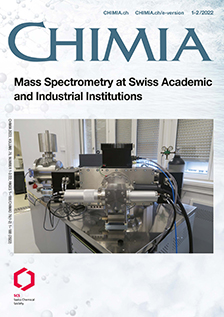Asymmetrical Flow Field-Flow Fractionation Coupled to ICP-MS for Characterization of Trace Metal Species in the Environment from Macromolecular to Nano-Assemblage Forms: Current Challenges for Quantification
DOI:
https://doi.org/10.2533/chimia.2022.34PMID:
38069747Keywords:
Asymmetrical flow field-flow fractionation, Eco-corona and bio-corona, Environmental colloids, Nanoparticles, ICP-MS, Slot-flow technologyAbstract
Asymmetrical flow field-flow fractionation (AF4) is a powerful technique employed for the separation of macromolecules, nanoparticles, and their assemblages according to their hydrodynamic behavior. It is well known that at this size range, complex interactions can occur between components (e.g. surface adsorption, aggregation) controlling the fate of trace metals (TMs) bound to them. AF4 coupling to inductively coupled plasma mass spectrometry (ICP-MS) allows the quantification of metal-containing species at trace levels present in environmental and biological systems on a size-composition basis. The combination of AF4-ICP-MS with other online detectors provides additional information that allows the assessment of the origin of analytes present in mixtures and complex matrixes with minimal sample preparation, which is crucial for understanding the behavior of trace metal contaminants. Despite the increasing use of AF4-ICP-MS in environmental contexts, we acknowledge that the quantification of inorganic species using such combined techniques requires further development of standardized procedures and need certified reference materials. In this review, we also discuss critical endpoints within the ICP-MS instrument coupled to AF4 that need to be controlled before quantitative measurements can be validated. Then, we illustrate how the combination of different online detectors in addition to ICP-MS offers an integrated picture of natural components states, thus providing key information on the changes in behavior of trace metal species and metallic nanoparticles (MNPs) as observed in both environmental samples and biofluids.
Funding data
-
Schweizerischer Nationalfonds zur Förderung der Wissenschaftlichen Forschung
Grant numbers 206021_183292
Downloads
Additional Files
Published
Issue
Section
License
Copyright (c) 2022 Isabelle A. M. Worms, Vera I. Slaveykova

This work is licensed under a Creative Commons Attribution 4.0 International License.







